
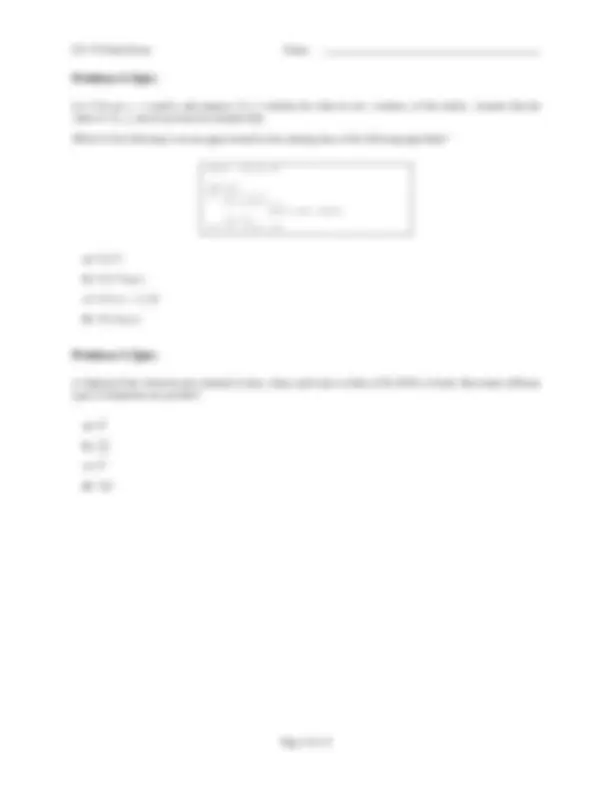
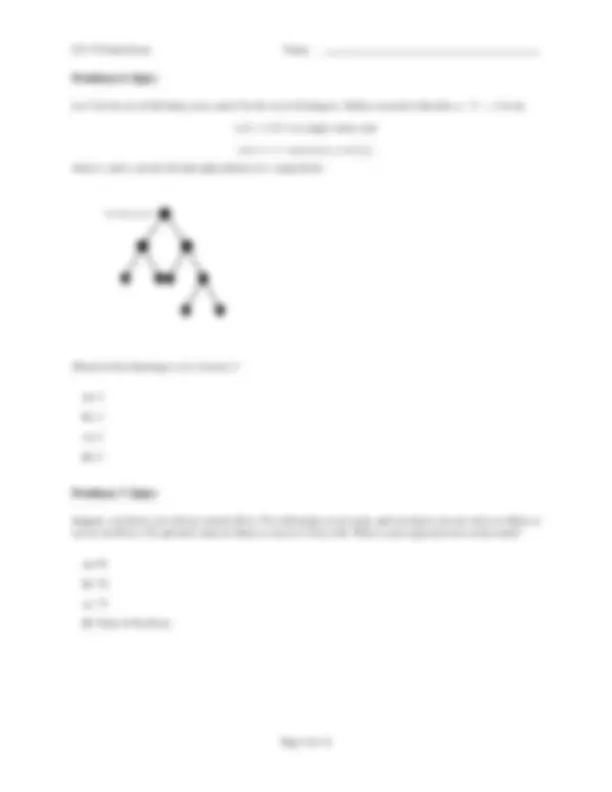
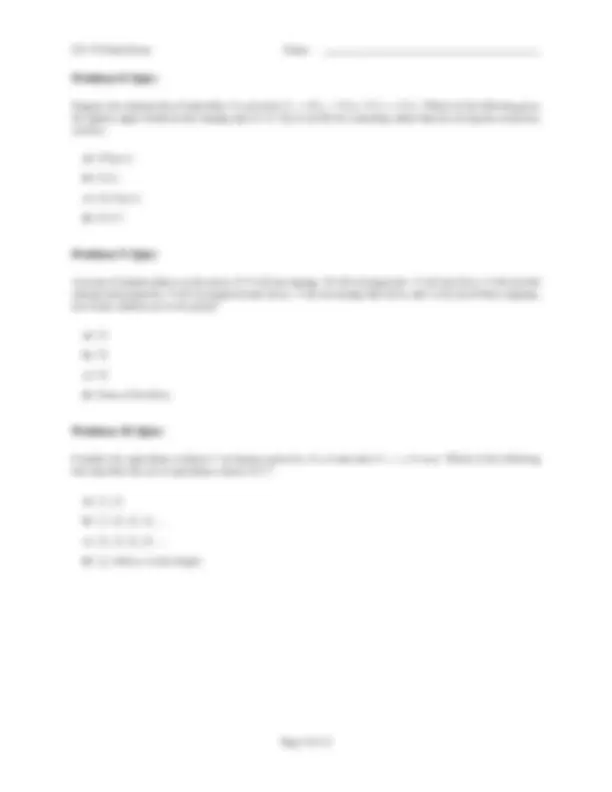
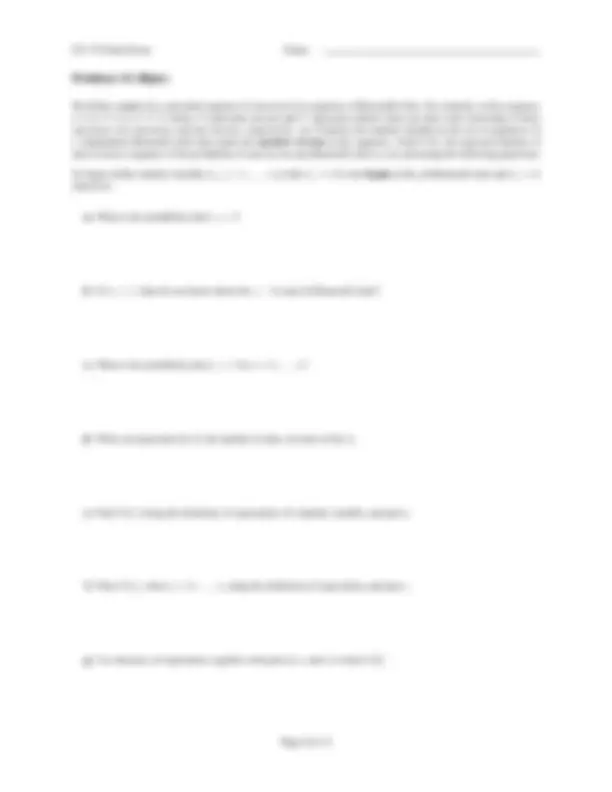
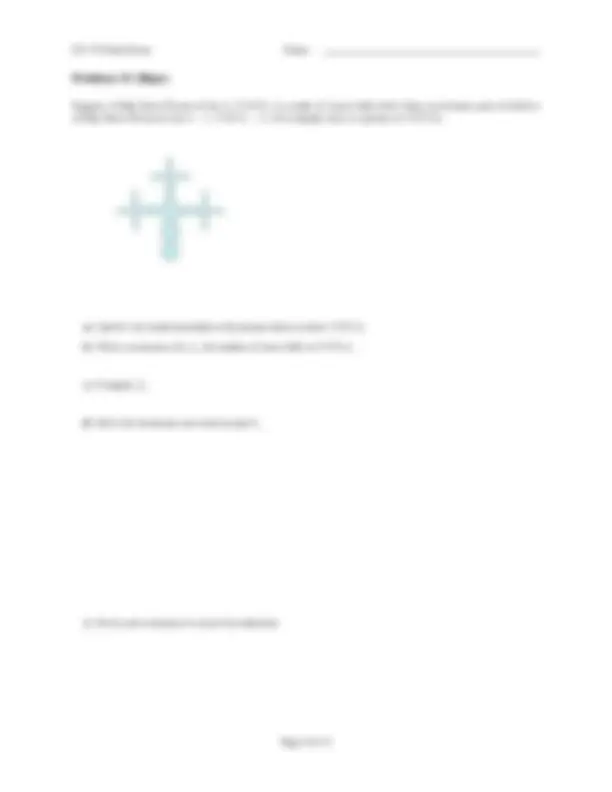
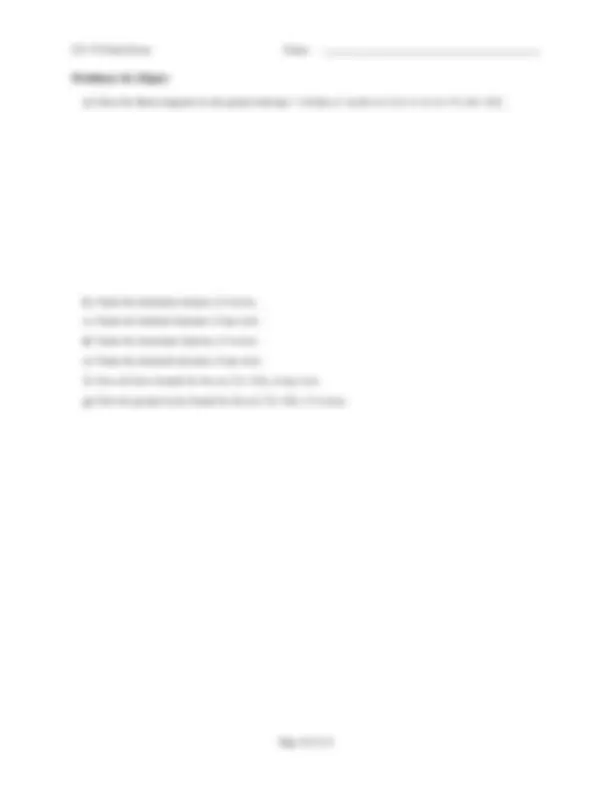


Study with the several resources on Docsity

Earn points by helping other students or get them with a premium plan


Prepare for your exams
Study with the several resources on Docsity

Earn points to download
Earn points by helping other students or get them with a premium plan
Community
Ask the community for help and clear up your study doubts
Discover the best universities in your country according to Docsity users
Free resources
Download our free guides on studying techniques, anxiety management strategies, and thesis advice from Docsity tutors
The final exam for a computer science course, cs 173, from the university of california, berkeley, held in fall 2005. The exam consists of multiple choice and long answer problems covering topics such as logic, sets, matrices, algorithms, and probability. The exam is divided into 17 questions, each worth a specific number of points, and the students are required to answer all questions. The exam is closed book and no notes are allowed.
Typology: Exams
1 / 12

This page cannot be seen from the preview
Don't miss anything!







Name:
NetID:
Section Leader:
General Directions
Question Points Out of
1 5 2 5 3 5 4 5 5 5 6 5 7 5 8 5 9 5 10 5 11 5 12 5 13 20 14 20 15 20 16 15 17 15
Total 150
One of these things is not like the others. Choose the response whose truth value is different than the other three.
a) ∀x∃y(x + y = x)
b) ∀x∃y(x + y = 0)
c) ∃y∀x(x + y = x)
d) ∃y∀x(x + y = 0)
Define the set A to be A = {x, {x}, {{x}}, {{{x}}}.. .}, and denote the power set of A by P (A). Which of the following is an appropriate choice to fill in the blank:
A − {x} P (A)
a) =
b) ∈ (and not ⊆)
c) ⊆ (and not ∈)
d) ∈ or ⊆
Suppose sets A and B are countably infinite. Which of the following is not necessarily true?
a) A ∩ B is countably infinite
b) A ∪ B is countably infinite
c) |A| = |Z| where Z is the set of all integers
d) |A| = |B|
Let T be the set of full binary trees, and Z be the set of all integers. Define a recursive function m : T → Z to be:
m(t) = 0 if t is a single vertex, and
m(t) = 1 + max{m(t 1 ), m(t 2 )},
where t 1 and t 2 are the left and right subtrees of t, respectively.
Full binary tree, t :
Which of the following is m(t) for tree t?
a) 3
b) 5
c) 6
d) 9
Suppose you know you will get exactly 60 or 70 or 80 points on an exam, and you know you are twice as likely to receive an 80 as a 70, and three times as likely to receive a 70 as a 60. What is your expected score on the exam?
a) 65
b) 70
c) 75
d) None of the above.
Suppose the running time of algorithm A is given by Tn = 2T n 2 + O(n), T (1) = O(1). Which of the following gives the tightest upper bound on the running time of A? (Try to do this by reasoning, rather than by solving the recurrence exactly.)
a) O(log n)
b) O(n)
c) O(n log n)
d) O(n^2 )
A group of students plans to order pizza. If 13 will eat sausage, 10 will eat pepperoni, 12 will eat olives, 4 will eat both sausage and pepperoni, 5 will eat pepperoni and olives, 7 will eat sausage and olives, and 3 will eat all three toppings, how many students are in the group?
a) 12
b) 22
c) 35
d) None of the above.
Consider the equivalence relation V on integers given by xV y if and only if x + y is even. Which of the following best describes the set of equivalence classes of V?
a) [1], [2]
b) [1], [2], [3], [4],...
c) [2], [4], [6], [8],...
d) [y], where y is any integer.
Suppose a set A has n ≥ 2 elements and a set B has 2 elements. In this problem, we will count the number of functions f : A → B that are surjective (onto), and the number of functions g : B → A that are injective (one-to-one).
a) How many different functions f are there from A to B?
b) Describe the functions that are not onto.
c) How man functions are there of the type you described in part b?
d) How many onto functions, f : A → B, are there?
e) How many different functions g are there from B to A?
f) How many one-to-one functions, g : B → A, are there?
We define a run to be a maximal sequence of successes in a sequence of Bernoulli trials. For example, in the sequence S, S, S, F, S, S, F, F, S (where S represents success and F represents failure) there are three runs consisting of three successes, two successes, and one success, respectively. Let R denote the random variable on the set of sequences of n independent Bernoulli trials that counts the number of runs in the sequence. Find E[R], the expected number of runs in such a sequence if the probability of success on each Bernoulli trial is p, by answering the following questions.
To begin, define random variables Ij , j = 1,... , n so that Ij = 1 if a run begins at the jth Bernoulli trial, and Ij = 0, otherwise.
a) What is the probability that I 1 = 1?
b) If Ij = 1, what do you know about the j − 1 st and jth Bernoulli trials?
c) What is the probability that Ij = 1 for j = 2,... , n?
d) Write an expression for R, the number of runs, in terms of the Ij.
e) Find E[I 1 ] using the definition of expectation of a random variable, and part a.
f) Find E[Ij ], where j = 2,... , n, using the definition of expectation, and part c.
g) Use linearity of expectation, together with parts d, e, and f, to find E[R].
a) Draw the Hasse diagram for the partial ordering “x divides y” on the set { 3 , 6 , 9 , 18 , 54 , 72 , 108 , 162 }.
b) Name the minimum element, if it exists.
c) Name the minimal elements, if any exist.
d) Name the maximum element, if it exists.
e) Name the maximal elements, if any exist.
f) Give all lower bounds for the set { 72 , 108 }, if any exist.
g) Give the greatest lower bound for the set { 72 , 108 }, if it exists.
Solve the following recurrence:
an = 5a n 2 − 6 a n 4 + n 4 a 1 = 3, a 2 = 9